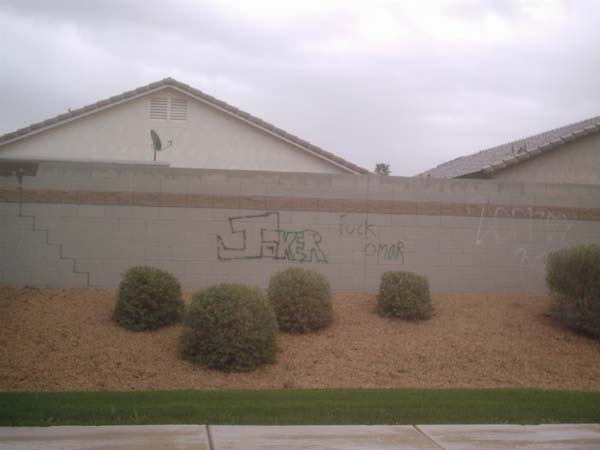|
|
|
|
Brick and Chain-link: Social Boundaries During the subdivision landscape survey, I noticed something I couldn’t quite understand. There were fences everywhere in South Phoenix. Not just in the new areas, not just in the original areas, but in both. It was one commonality between these two groups that actually existed and was quite evident. But are the fences in both communities being used for the same purpose and in the same way? The original homes of the area had chain-link around the entire yard. The fences were shorter and see through. While there was a physical barrier between the outside and inside of the yard, it seemed less restraining because what was going on behind the fence was still visible. The homes, children’s toys, and cars were all still visible from the street.
Rojas in the “Urban Cultures” article goes into length about the meaning of fences in Latino areas. He suggests that the fence does state ownership, but it doesn’t necessarily enforce isolation. Fences rather promote individuality and yet maintain a community feel by giving the owner of the house and their neighbors a point at which to meet. The newer communities have fences too, but these seem to have a different meaning. The fences don’t exist around the house so much as they exist around the newer communities. Using the Roja principle, this seems to mean the fence would be a neutral point for two parties to meet at. These walls unlike the neighbor’s are 10 feet high with no visibility through them. Its almost like the neighbors aren’t meant to be seen, or invited over to talk. It is clear that the neighbors in this case are unwanted for social interactions. The only thing that is clear is the big fence indicates a property that “they” aren’t allowed to enter.
Its amazing how a simple object, a fence, can be clearly labeled to mean two entirely different things to two different groups. Better yet, the wants and wishes of the groups are reflected in the object. One group wants respect and community while another wants isolation from the original inhabitants.
|
|
| Jump back to SPHX 2005 | |


